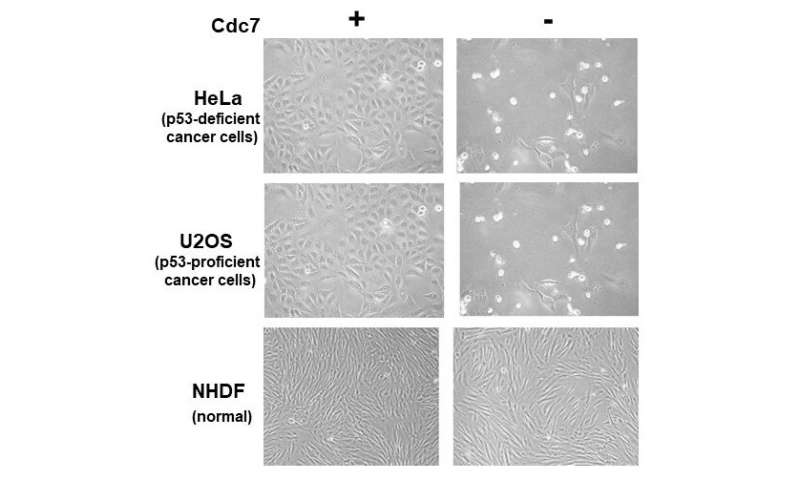
The key to effective cures for cancers is to find weak points of cancer cells that are not found in non-cancer cells. Researchers at the Tokyo Metropolitan Institute of Medical Science found that cancerous and non-cancerous cells depend on different factors for survival when their DNA replication is blocked. Drugs that inhibited the survival factor required by cancer cells would selectively make cancer cells more vulnerable to replication inhibition.
DNA replication, copying the 3 billion base pairs of the human genome, takes six to eight hours. During this time, cells can encounter many problems that interfere with the copying process. DNA consists of long chains of nucleotide bases, and obstacles such as DNA interacting compounds, damaged bases, cross-linked DNA strands, reductions in nucleotide precursors, blockage by DNA binding proteins, unusual secondary structures of template DNAs, and collision with transcription can all contribute to blocking replication. It is essential for growing cells to overcome these problems to ensure that the entire genome is copied accurately. If cells cannot cope with these crises, the genome is likely to undergo changes that could cause cancer cells to develop.
Cells have evolved elaborate mechanisms to protect against damage from faulty DNA replication. When DNA replication machinery encounters an obstacle preventing replication, it activates a safety mechanism known as replication checkpoint. Replication checkpoint stops DNA replication and activates repair pathways. A critical protein in this process is called Claspin. When replication is blocked, a phosphate is covalently attached to Claspin in a process known as phosphorylation. Phosphorylation of Claspin is a critical first step in activating the replication checkpoint.
Recently, Chi-Chun Yang and his colleagues at the Tokyo Metropolitan Institute of Medical Science determined how Claspin is phosphorylated. Their findings were reported in the 2019 December issue of eLife. By using genetically modified animals and cells as well as biochemical analyses with purified proteins, they found that when DNA replication is blocked in cancer cells, a protein called Cdc7 predominantly phosphorylates Claspin to activate the replication checkpoint. In contrast, in non-cancer cells, a different protein, CK1γ1, phosphorylates Claspin when DNA replication is blocked. The reason for this difference is because cancer cells have high amounts of Cdc7, while non-cancerous cells have low amounts of Cdc7 and relatively high amounts of CK1γ1. The results show an example of differential cellular strategies to deal with crisis between cancer and non-cancer cells.
Source: Read Full Article
